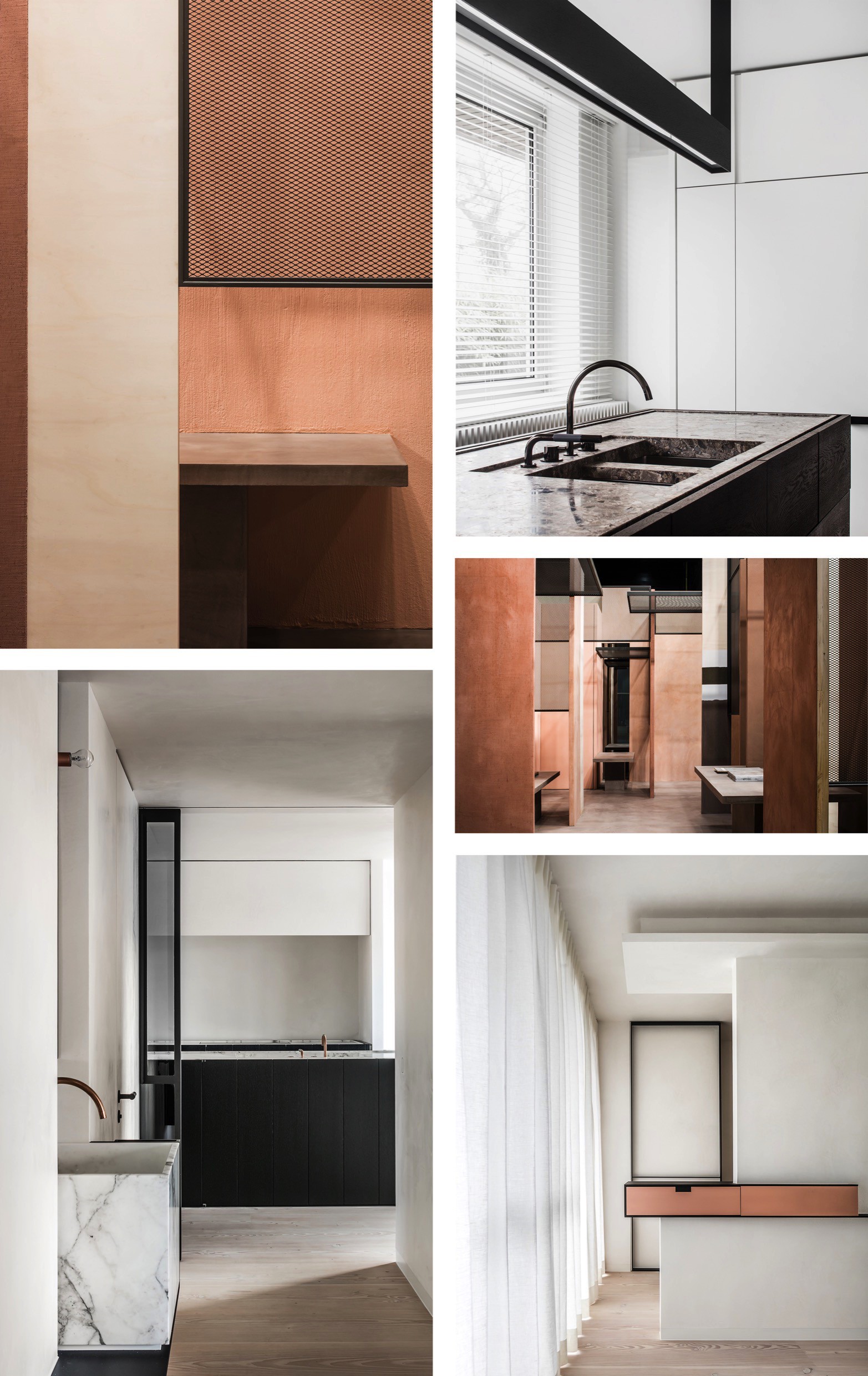Interior architect Frederic Kielemoes creates minimalist and subdued interiors that leave a powerful and warm impression. He does this by combining a well-thought-out play of lines with a rich choice of materials, subtle colour accents and an excellent eye for detail. His projects are internationally acclaimed and that is a real achievement for this West-Flemish one-man company. But just like his interiors, Kielemoes remains extremely sober under all this attention.
Kielemoes obtained his degree in Interior Architecture at the KASK in Ghent in 1996. Since then, he has been active as – as he calls it himself – a 'mood seller'. The interiors that he creates bear witness to a certain graphic minimalism, but are extremely warm and atmospheric at the same time. They give the owners and everyone who resides in them a feeling of security. And that is what luxury is all about for Kielemoes: being able to enjoy, feeling safe, feeling at home in a space.

Lines create life
The magazine Est Living compared an earlier project by Frederic Kielemoes with the paintings of the Dutch artist Piet Mondriaan. In a similar way, the designer is creating depth and life with his ingenious interplay of lines, making his spaces like modern works of art. We can only agree with this interpretation and we look with the same fascination at what Kielemoes and his applealing realisations achieve with the onlooker. Shortly put: his minimalism has a maximum effect. The seemingly simple compositions of projects such as H Ardooie, DB Gent and the exhibition stand he designed for Odilon Creations for Interieur 2018 in Kortrijk leave an enormously powerful impression on you and to be honest, they photograph remarkably well. Just look at the images you see here: you could have them printed on a large canvas or framed and then hang them on the wall between the rest of your art collection. Despite their straight lines and clean forms, there is a lot of life in them and they have the power to arouse certain emotions in those who witness them.
"Luxury is: being able to enjoy, feeling safe, feeling at home in a space."
It should come as no surprise that Kielemoes has a great interest in art. Despite his busy schedule, he likes to spend his free time visiting exhibitions and discovering new artists and works. He mentions the Belgian post-war abstraction of painters such as Luc Peire, Dan Van Severen, Marc Verstockt, Bram Bogart, Jean Dubois and Guy Vandenbranden as important sources of inspiration.

Subdued grandeur
In contrast to these artists and the iconic works of Piet Mondriaan, the colour palette of Frederic Kielemoes is a lot more neutral, and it is perhaps for this reason that his interiors intrigue us so much. In their austerity they radiate refinement, luxury and a worldly class. The international attention this designer receives is more than deserved. We do wonder, however, why these minimalist, graphic spaces still look like warm environments in which it is undoubtedly pleasant to live or work. "The materialization makes a project cool or warm, not the form," Kielemoes tells us. "I use pure materials that evolve with the user. With strong lines and structures in a design, it is all the more important to pay the right attention to it.”

"The materialization makes the project cool or warm, not the shape."
The projects show a well-thought out contrast between concrete, wood and marble. The interior architect may use accents such as copper lighting elements and taps, original patterns or remarkable textures to interrupt the neutral colour palette, but the whole remains in harmony. Everything is reduced to its essence. The peace and tranquillity that arise from this approach, create a refined feeling of homeliness.

Where he also uses the principle of ‘less is more’ and yet achieves great things, is in his work process. Frederic Kielemoes prefers to work alone and admits that he does not have the ambition or need to lead an agency where he would have to hand over certain (artistic) decisions. This way, he can keep control over his projects and he can be sure that the result that bears his name is something he fully supports. However, he does like to take the time to prepare for a project. On average, the design phase takes six months because he has to get to know the customer, explore the possibilities, try things out, make different sketches and because all the details have to be right. What he therefore can't do without: his sketchbook. Coming up with new ideas and having inspiration hit him can happen everywhere and he wants to be ready at all times to draw them out as well as possible. These colourful and detailed sketches could just as well be works of art. If he hadn’t become an interior architect, then we were undoubtedly now sitting face to face with a great artist!
